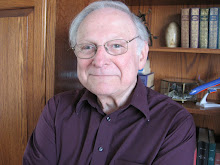 In honor of a visit by the Duchess of York, I see the high-society
folks in Houston have thrown a little afternoon get-together that they called a
“high tea.” Although I was not present at this gala event, I’m willing to bet
that it was not high tea at all.
In honor of a visit by the Duchess of York, I see the high-society
folks in Houston have thrown a little afternoon get-together that they called a
“high tea.” Although I was not present at this gala event, I’m willing to bet
that it was not high tea at all.
Most Americans have the mistaken notion that “high tea” is a very elaborate
spread, replete with silver teapot, fine china cups, dainty finger sandwiches
of cucumber and smoked salmon, rich cakes, delicate cream puffs, chocolate éclairs, crumpets, and
buttery scones laden with clotted cream.
That’s “afternoon tea,” albeit a very upscale one. A more typical
afternoon tea would consist of a cup of tea, a few biscuits (cookies), and
maybe a slice of cake.
Variations of afternoon tea include a “light tea,” in which the food
is generally limited to sweets, such as biscuits, sponge cakes, madeleines, or
trifle; “full tea,” in which various savory sandwiches are added to a large
array of sweets; and “cream tea,” in which the principal food is scones with
Devonshire cream and strawberry preserves. If fresh strawberries are served
with the scones, the cream tea becomes a “strawberry tea.”
The misunderstanding about “high tea” comes from the interpretation of
the word “high,” which is wrongly thought in this instance to mean “grand” or “elegant.”
In fact “high tea,” usually served in working-class households, consists of
simple, hot food—fried eggs, sausages, cheese, tomatoes, chips, beans, etc., as well as a
cup of tea—and serves as the evening meal. Nowadays, one finds such a meal
referred to as “high tea” mostly in Scotland and the North of England. In other
places it may be known as “supper” of simply “tea.”
The best explanation I have come across as to why it’s called “high
tea,” is that it was eaten around 6:00 p.m. by servants at a dinner table of
standard height—as opposed to the low tea tables on which afternoon tea for the
upper crust had been served, usually at about 4:00 p.m. Eaten from a more
elevated table, the meal was therefore a “high” tea.
The Bard of
Buffalo Bayou is usually high himself, but not from tea.
The
high and mighty
Like
their high tea,
But
I’ll take low tea
Over
no tea.

No comments:
Post a Comment